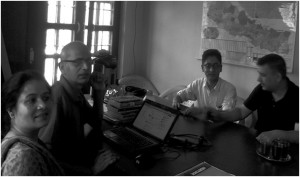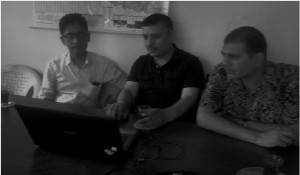Nepal’s media environment has become diverse over the years. Thousands of newspapers are published from around the country. Hundreds of radio stations and news portals, and several dozen television stations are operational. The growth has been so fast, and with the pace continuing, it is difficult to get a clear and accurate picture of the country’s mediascape at a given time. Moreover, timely and authentic data on various forms of media channels and platforms remain limited.
Here at Media Foundation Nepal (MFN), we have been working on integrating the data available from various authentic sources, and visualizing them in the form of an interactive map for a simple, easy, holistic view. (a large view । even larger view)
The Nepal Interactive Media Map is, thus, a one-page view of the country’s mediascape. This is based on data sources from Press Council Nepal and the Ministry of Information and Communications. Included here are registered newspapers, published and unpublished, and online news sites that had applied for registration, operational FM radio stations, which had obtained the government licenses, and license-holding TV channels across the country.


